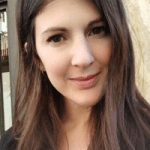Europe evaluates its citizen science and biodiversity projects
ALTER-Net, the network of European experts on biodiversity and ecosystem services, has published a review article on citizen science and learning in the journal Conservation Biology. The authors stress that in order for participative projects to reach their potential scientists should become more involved and not remain the background.

Citizen science continues to gain more support and recognition in the scientific world. This is shown by the fact that the ALTER-Net network, an organization with representation from 18 leading European centers in biodiversity and ecosystem services, has funded a study on the potential of citizen science and as a technique for learning. The study, recently published in the journal Conservation Biology, had the participation of 20 European scientists, including two from CREAF.
Each year, ALTER-Net opens a call for participating in a high-impact publication of open topic, called the AHIAcalls. ALTER-Net scientists form teams and ponder the study – or studies – they would like to propose. The proposal which receives the most support and participation is selected, and a review is therefore carried out on the topic.
The idea for publishing an article on this topic first came from the Hungarian researcher Györgyi Bela from Szent István University, and she was soon joined by other experts including CREAF ecologists Corina Basnou and Joan Pino. Basnou explains, “we decided to support this project because we understand the importance of including citizens in science. Citizen science is useful not only for enriching the knowledge of participants, it enhances the actual research and its visibility.”

Spain is at the forefront of the movement to connect citizens and nature
The winning study of the AHIA call had a team of 20 ALTER-Net members with different backgrounds relating to citizen science. The participants collaborated in analyzing European projects with citizen participation; of the 14 programs analyzed, six had the objective of connecting citizens with nature, and three were oriented towards the establishment of new networks.
Spanish projects are notable for monitoring schemes which get the participants in closer touch with the natural world. Two such projects considered by the study were the Catalonia Butterfly Monitoring Scheme (CBMS) and BioBlitz de Barcelona, a seminar series which had record attendance in 2016.
The CMBS, with its 23-year history, continues to attract volunteers who provide data on butterflies in Catalonia - data which has been used in a number of scientific publications. “We considered two large data-gathering projects, but it suffices to say that these are not the only ones in Spain. Mosquito Alert and Natusfera are also noteworthy projects because of the large impacts they have had on society. Natusfera even puts lovers of nature in contact with each other,” says Basnau.
Europe has other initiatives such as Virtual Biodiversity which put participants in contact with each other. Similar to Natusfera, this Spanish science and dissemination platform consists of thematic galleries of digital photographs. Any expert - including people not formally working in science - can connect with others through their mutual fascinations with the beauty of nature.

A long road ahead
Though the participation of European citizens in such projects is increasing, there is still a lot of work to be done: “Even after the review was finished and published, we [the authors] have seen that it will be necessary to assure mutual learning. Participants become enriched with new scientific knowledge, but the experts need to do a better job of responding to questions and should consider whether their studies are addressing citizens’ gaps in knowledge,” says Corina Basnou.
Criticisms of this type have been directed toward projects without follow-up involvement, and there have even been cases of projects which lack final reports on educational measures or achievement of the stated goals. There is a growing sense of need for citizen science for everyone, and as Dr. Basnou comments, “there needs to be a plan for social inclusion in new projects. Without realizing it, we have tended to promote a certain participant profile, basically adults with a certain level of education. Why aren’t we opening science to everyone instead?”
Step by step, progress is being made in this growing field. On one hand, it is desirable to incentivize greater inclusion of citizen science in research and decision-making, but this must also be done economically to assure adequate return on investment and mutual benefit, and for this a better definition of the “general public” is needed. According to Basnou, “a perfect symbiosis between researchers and collaborators is difficult, but we are currently discovering the large potential and potency of citizen involvement.”

Referenced article:
Bela G., Basnou C., Pino J., et al. Learning and the transformative potential of citizen science. (2016) Conservation Biology. DOI: 10.1111/cobi.12762
Dimensions and benefits of citizen science for Science and society on the basis of the referenced article:







